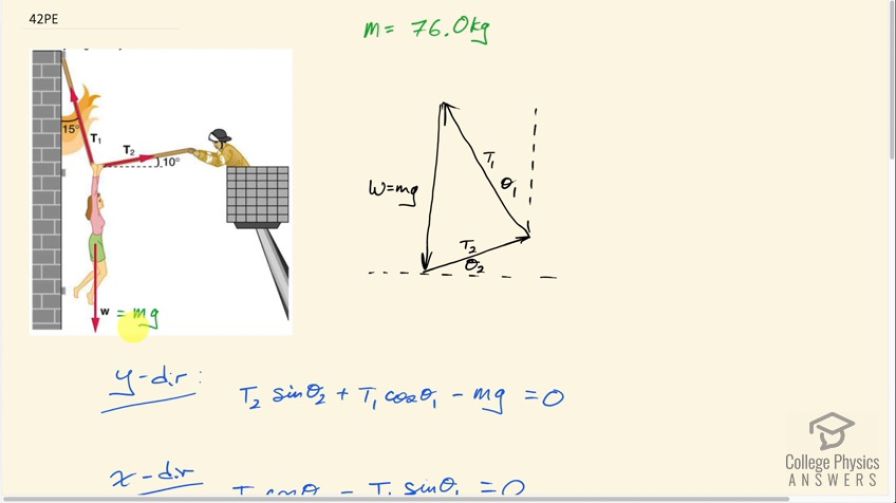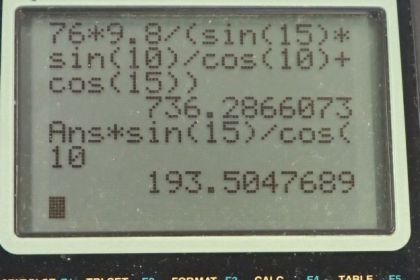Solution video
OpenStax College Physics, Chapter 4, Problem 42 (Problems & Exercises)

Calculator Screenshots
Comments
Why doesn't it work with basic trig if you solve the internal right triangles and figure out the other angles? Through trig and sin/cos I got t2=192.8 and t1=719.4 which is close, but not the same answer. Did I solve for the angles inside the triangle wrong, or is there something else I'm missing?
Hi georgeh, sorry, but I don't really understand the suggestion of "solve the internal right triangles and figure out the other angles". The main idea is that all the vertical forces must add to zero, and all the horizontal forces must add to zero. This is true for every "statics" problem in which the object isn't moving, and therefore the net force is zero. Trig is needed to figure out the vertical and horizontal components. I can understand why things can be confusing since there are other approaches to the trig. which will work, such as by making a triangle with the vectors and using the sine or cosine law instead of resolving vectors into components.
Hi Shaun! I'm a bit confused at the formula used. I understood it as T1Cos1=T2Cos2. In the solution I see you used T1cos1=T2sin2. Do you know which form is correct?
Is this the form only If you're using internal angles but since you used a different angle Cos worked?
Hi Jarod,
Thank you for the question. There isn't a "rule" to follow with regards to "always use cosine" - rather, the rule is to resolve the tension into vertical and horizontal components. For static equilibrium the total horizontal components need to be equal (likewise, the total vertical components also need to be equal). How you calculate these components depends on the picture. Often angles are given with respect to horizontal, in which case cosine would be used, but given the same force and an angle with respect to vertical, then sine would need to be used. It isn't an "internal" vs "external" question, but rather with respect to which axis (horizontal vs vertical) the angle is given.
Hope this helps,
Shaun
I tried to use this on example 4.8 and I got one of the tensions but not the other, does this formula not work on some equations?
Hi Austin, the approach shown here will work for any static equilibrium question with tension. The "formula" might be different depending on the geometry of the scenario. In other words, care needs to be take as to which trigonometric function is used for finding components. In any case, in any static equilibrium question the total components in the x direction and the total components in the y direction of all tension forces need to balance out.
Hope this helps,
Shaun



